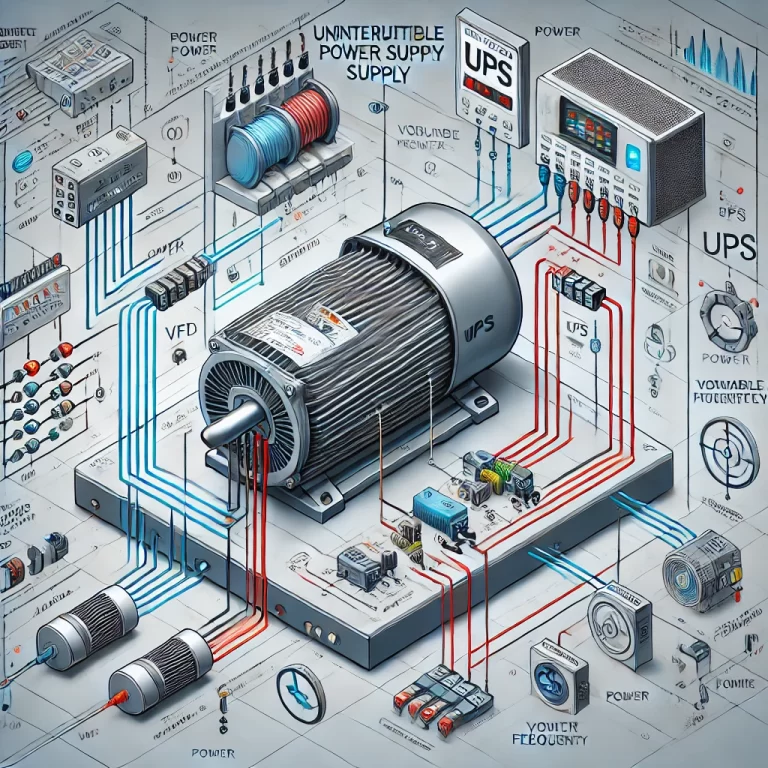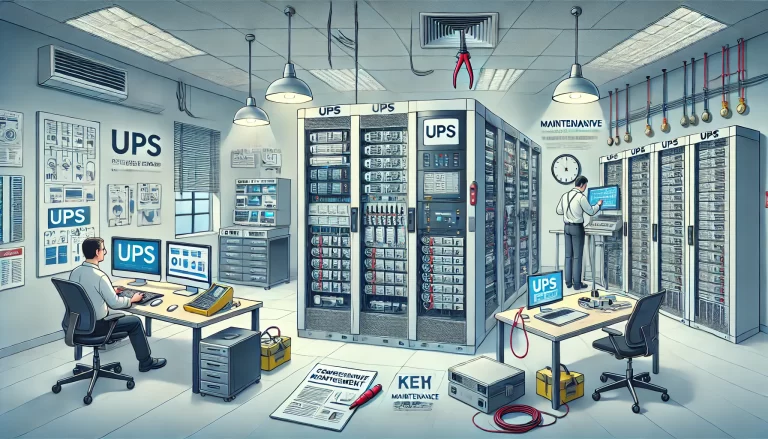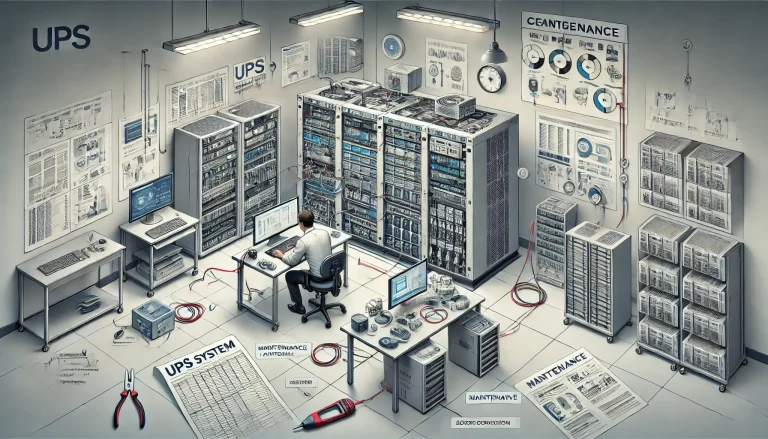In modern industrial automation and process control systems, ensuring uninterrupted power supply is critical, especially for sensitive instrumentation such as Distributed Control Systems (DCS), Safety Instrumented Systems (SIS), and Programmable Logic Controllers (PLC). To enhance power reliability, dual UPS (Uninterruptible Power Supply) configurations are commonly deployed. However, one key engineering decision is whether to operate these UPS systems in split (independent) mode or parallel (synchronized) mode.
This article explores both strategies in detail, compares their advantages and risks, and provides guidance on the preferred approach for instrumentation systems.

1. What is Split Operation in Dual UPS Systems?
Definition:
Split operation means that two UPS units operate independently, each supplying power to separate loads or feeding a dual-input device via an automatic transfer switch (ATS) or static transfer switch (STS). There is no electrical connection between the two UPS outputs under normal conditions.
Typical Architecture:
[UPS A] ──┐
├── Dual Power Transfer Module ── DCS/PLC Cabinet A
[UPS B] ──┘
[UPS A] ── Instrumentation System B
[UPS B] ── Instrumentation System C
Key Advantages:
✅ True Redundancy: Each UPS can fail independently without affecting the other load path.
✅ Fault Isolation: Electrical faults in one UPS will not propagate across systems.
✅ Simplified Maintenance: One UPS can be taken offline for maintenance while the other continues to operate.
✅ Improved System Stability: Avoids synchronization issues or load sharing imbalances.
Common Use Cases:
DCS and SIS systems in refineries, petrochemical plants, power stations, and pharmaceutical factories.
Situations where equipment has dual power inputs or when redundant power transfer modules are installed.

2. What is Parallel Operation in Dual UPS Systems?
Definition:
Parallel operation (also called load-sharing or synchronized operation) refers to two UPS units being electrically connected in parallel to share the same load. These systems use synchronization and load-sharing control to function as a single power source.
Typical Architecture:
[UPS A] ──┐
├── Parallel Bus ── Common Output to Load
[UPS B] ──┘
Key Advantages:
✅ Increased Capacity: Allows UPS systems to support larger loads.
✅ N+1 Redundancy: One UPS can fail while the remaining supports the full load (if properly sized).
✅ Centralized Power Management: Simplifies load monitoring and power planning.
Risks and Limitations:
⚠️ Single Point of Failure: Faults in the parallel bus or control logic can bring down the entire system.
⚠️ Synchronization Challenges: Requires precise phase alignment and load balancing.
⚠️ Loop Currents: Improper configuration can result in circulating currents between UPS units.
⚠️ Brand/Model Compatibility: UPS systems must support parallel mode and be carefully matched.
Common Use Cases:
Data centers, IT rooms, or general facilities where scalability and shared load are prioritized.
Instrumentation systems only when very high load capacity is required and proper protections are in place.

3. Comparison Summary Table
| Feature | Split Operation | Parallel Operation |
|---|---|---|
| Redundancy Level | True, independent power paths | Partial (N+1), shared failure risk |
| Fault Isolation | Excellent | Poor (shared bus risk) |
| UPS Maintenance Impact | Low (one can be serviced) | Medium-High (depends on bypass) |
| Synchronization Requirement | None | Strictly required |
| Recommended for Instrumentation? | ✅ Yes | ⚠️ Not recommended (unless justified) |

4. Recommended Practice for Instrumentation Systems
For industrial instrumentation systems, especially those that control critical processes, safety systems, and continuous manufacturing operations:
Split UPS operation is strongly recommended.
By designing two truly independent power paths, engineers can ensure:
Maximum availability and uptime,
Seamless failover with no process interruption,
Higher resistance to cascading failures.
For enhanced reliability, the power architecture should also include:
Dual power input modules on critical devices,
Static transfer switches (STS) or Automatic Transfer Switches (ATS),
Regular UPS testing and battery health monitoring.

5. Conclusion
While both split and parallel UPS configurations have their place, for instrumentation systems, split operation provides significantly higher reliability and safety. It ensures each power path is isolated and independently available in case of UPS faults, grid failures, or maintenance operations.
Parallel operation may be considered in specific high-capacity scenarios, but it introduces complexity and potential single points of failure, which are undesirable in critical control environments.
Choose split operation. Design for resilience. Protect your process.
